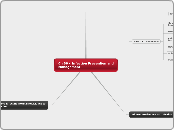Ch 30 - Infection Prevention and Management
Normal Resistance to Infection
Nonspecific natural defenses
Individual Factors
Heredity
Good Hygiene practices
Good Nutritional status
immunization history
Anatomic, Mechanical, & Chemical Barriers
Mechanical - intact skin and mucus membranes
Chemical - acidity of skin and vagina, bactericidal enzymes of saliva, mucus, tears and sweat
Interferon - a nonspecific chemical inhibitor that is secreted by body cells in response to viral invasion
Microorganisms that live on the body surfaces are referred to as normal flora.
Inflammatory Response
Attempts to limit injury's extent
H I P E R
H - Heat,
I - Induration (hardening)
P - Pain
E - Edema (swelling)
R - Redness
WBC function
Leukocytes - AKA White blood cells
Two categories
Granulocytes - polymorphonuclear cells that contain granules of digestive enzymes
Agranulocytes - mononuclear cells that lack digestive enzymes
Normal WBC is 5,000 to 10,000, above this range is indicative of infection
Fever
Elevated body temperature (greater than 101F or 38.2C)
Specific acquired defenses
Cellular immunity (T lymphocytes elaborate killer cells and helper cells)
Memory of the organisms produces lasting immunity
Antigens - foreign particles, such as microbes, that enter a host
Humoral Immunity - B lymphocytes produce antibodies
Active immunity
Vaccination
Passive Immunity
Altered Resistance to Infection
Type of infection
Local VS Systemic (bacteremia)
Acute VS Chronic
Health-Care Associated Infections (AKA Nosocomial Infections)
Sepsis
Early symptoms are referred to as systemic inflammatory response syndrome (SIRS)
Progress of Infection
Communicable Period
Incubation Period
Prodromal Period
Acute Phase of Illness
Convalescent Period
Communicable Disease - the causative agent of the disease is transmissible between one person to another
Manifestations of Infection
Early signs include: Malaise, listlessness, uneasiness, weakness, muscle of joint discomfort, headache, or anorexia
Fever - considered a sign of infection
Phases of
Factors Effecting Normal Resistance to Infection
Infectious Agents
Parasites
Bacteria
Viruses
Fungi
Compromised Hosts
Breaks in Skin and Mucus Membranes
Invasive Devices
Stasis of Body Fluids
Inadequate Nutrition
Stress and Hyperglycemia
Immune System Dysfunction
Coexisting Medical Problems
Drug Therapy
